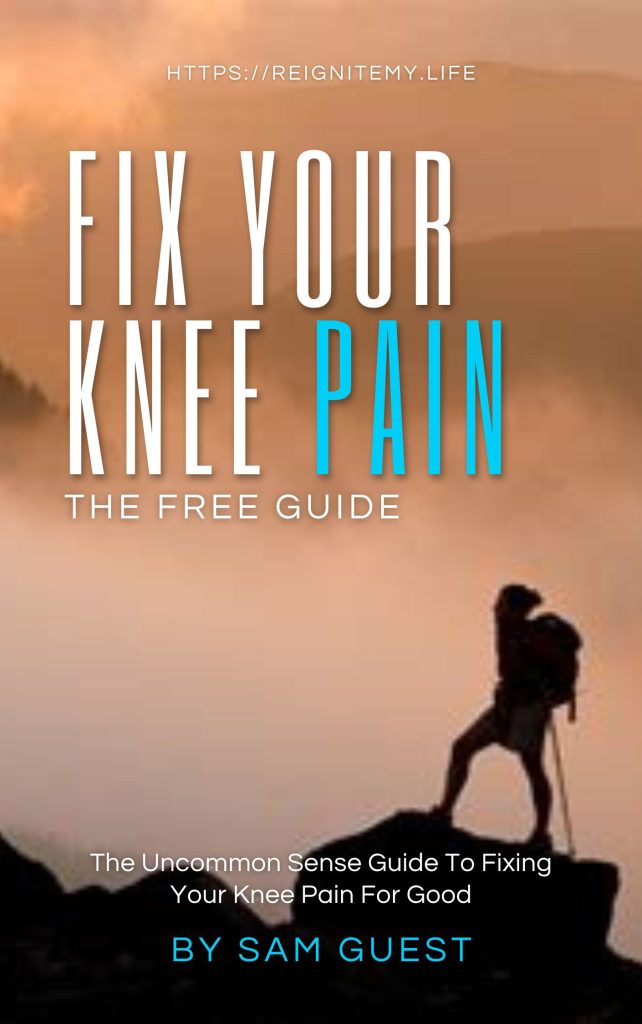
“Arrrgghhhh,” I screamed…my heart sank, I punched the water in frustration. I instantly thought of all the weeks ahead of me when I’d be stuck immobile unable to kite, to surf, to run.
I knew I’d done some serious damage…
I had felt the muscle tear and now faced the long road back to recovery and the constant worrying as to if I would actually recover properly ever again, or if this would be the one which slowly stopped me doing the things I loved.
Conventional wisdom tells us, when you pull or tear a muscle that the muscle was too weak and the solution therefore is to build it up stronger.
Rehab thus focusses on making that individual muscle stronger so it is able to withstand greater forces in the future and so not get injured…

Sounds about right…
Right?
Wrong…
What if we’ve been looking at it all wrong and this is why re-injury, painfully slow recovery and very often less than full recovery is so common..
What if by focussing on strengthening the muscle which got injured we’re actually making it MORE likely it’ll tear again in the future?
And this is exactly what I’ve found working with clients.
When you focus on making one muscle strong unless you do it a very specific way you also make it dense.
This muscle is now so dense that it has very little give, very little flex (or suspension as I like to think of it) so it pulls any muscles which attach to it towards it.
Now, the body is an interconnected system where each action has a reaction across the entire system.
So as that one muscle gets stronger and denser and pulls the connective muscles towards it, this takes any redundancy out of the system, it makes the suspension much tighter with much less give.

So when you suffer a knock or apply a lot of force to that muscle it has no ability to absorb and distribute that force across the system. It must take the entire impact on that one dense, strong muscle…which then inevitably tears.
What if instead we focussed on making that muscle longer and softer as we make it stronger, whilst also doing the same for the muscles upstream and downstream of it?
We now have a muscular system with in built redundancy, with its own suspension. So when it suffers an impact the force is spread across several muscles all of which have the ability to lengthen and flex.
Now that same force can be absorbed without causing injury.
So am I saying you shouldn’t be strengthening muscles?
Not at all, but as you are working on making muscles stronger you MUST also be making sure they are soft and long, with a lot of redundancy built in.
This is exactly how your muscles are when you are young. Which is why young people never seem to get injured.
As we age we get knots and lesions in the muscles which cause them to bunch and tighten up. So we need to encourage our muscles to become young again.
This has multiple benefits, the main one being that we can continue to do the sports we love well beyond what is normally considered normal and not suffer the normal aches and pain we expect as we get older. It also means we spend less time on the physios table and more time on the water or the slopes doing what we actually love.
How to do this?
Whilst there are many ways the simplest is deep tissue massage. The first thing we need to do is work those knots out. Now this doesn’t have to mean expensive trips to the physio 3 times a week. By grabbing a foam roller and rolling around on it every morning over a couple of months you’ll notice some amazing things happen…aches and pains disappear and movement becomes effortless.
Yes you do have to suffer a few funny looks from your partner as you’re grunting and groaning whilst seemingly making love to the damn thing, but that’s a small price to pay for younger , more resilient muscles.
Want to have me coaching you live in techniques like this? Hit me up on WhatsApp and let’s chat about how I can help:
[ht-ctc-chat]
Chat soon,
Sam
??

